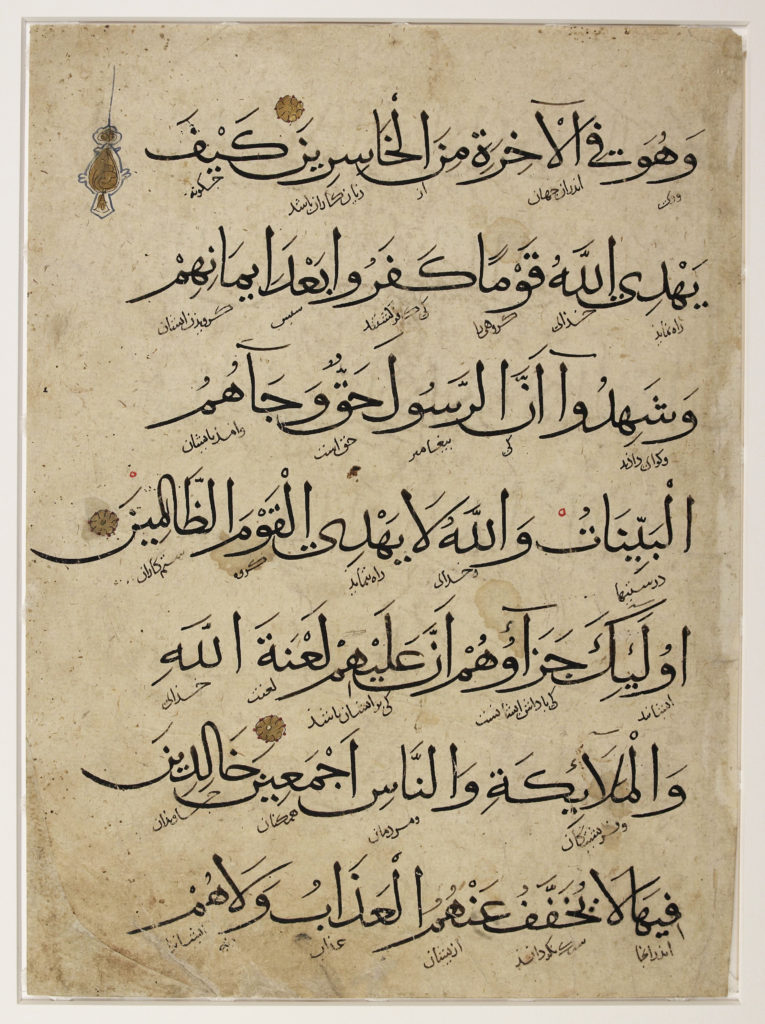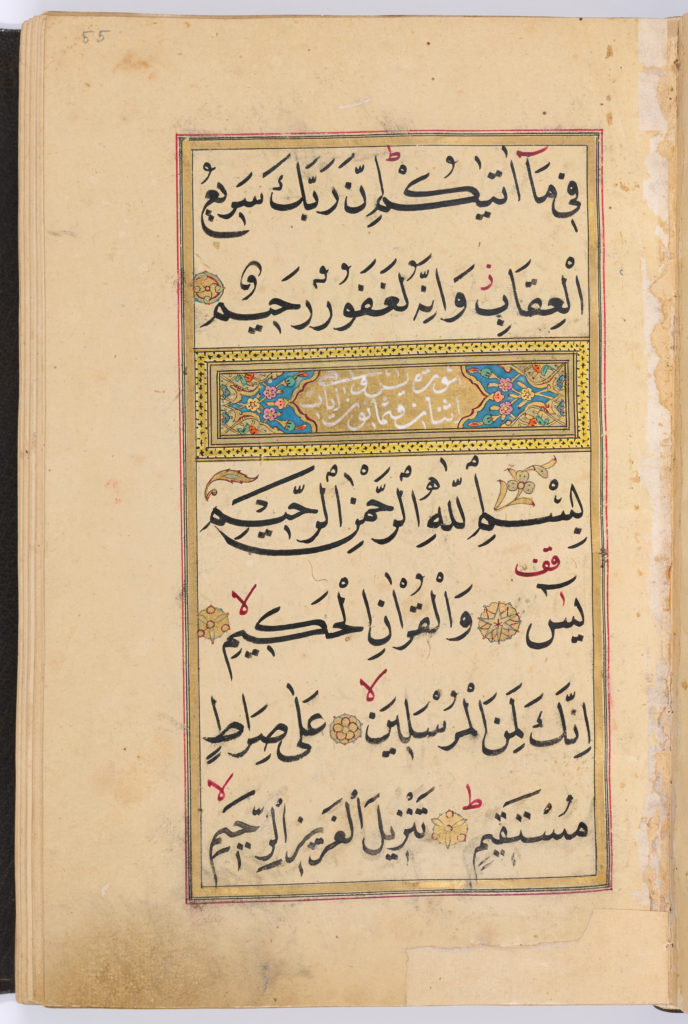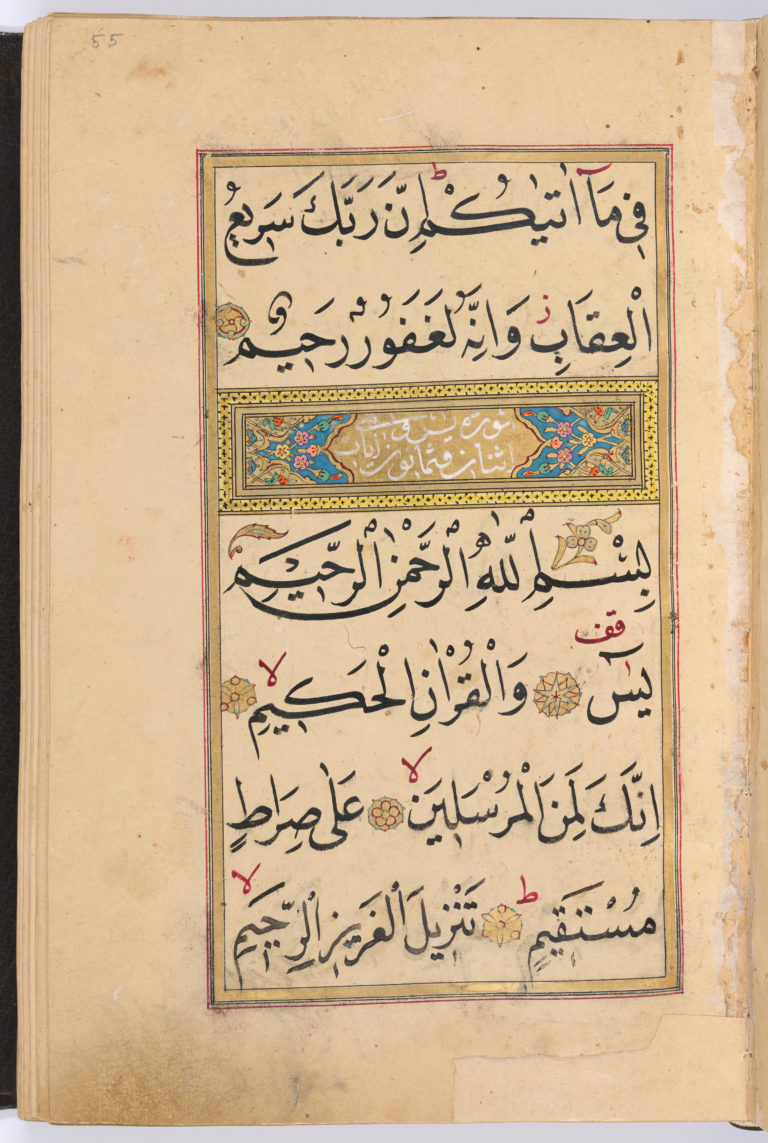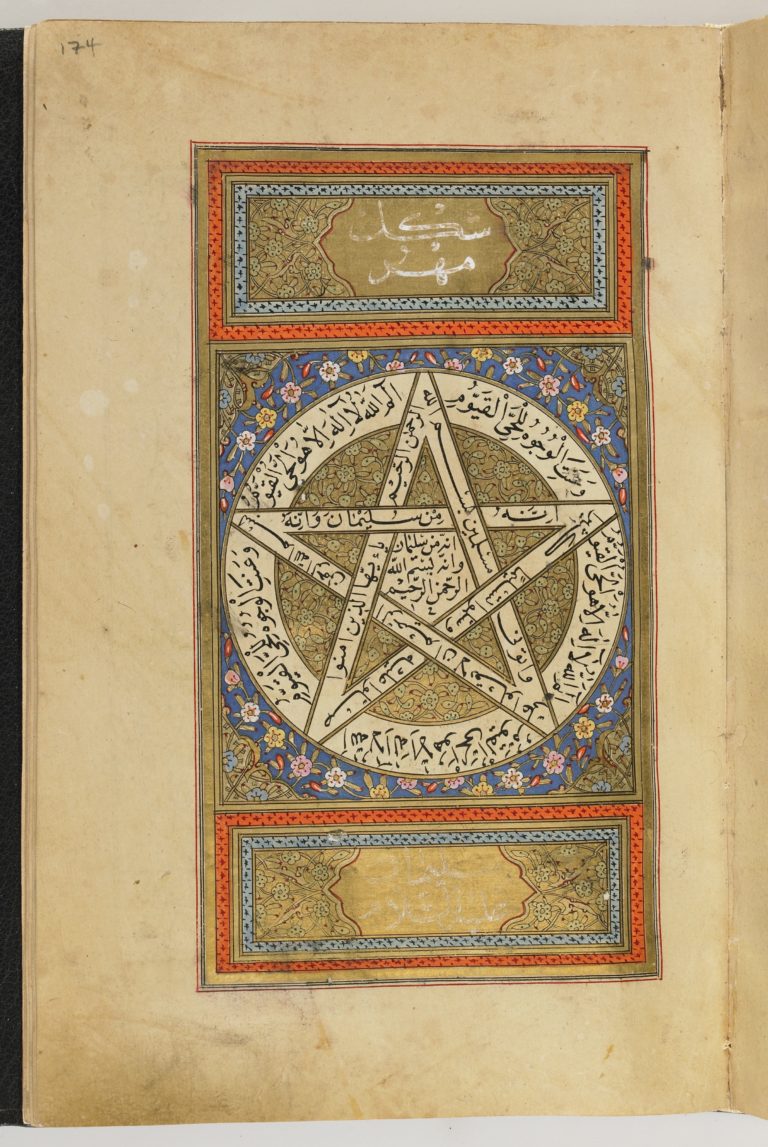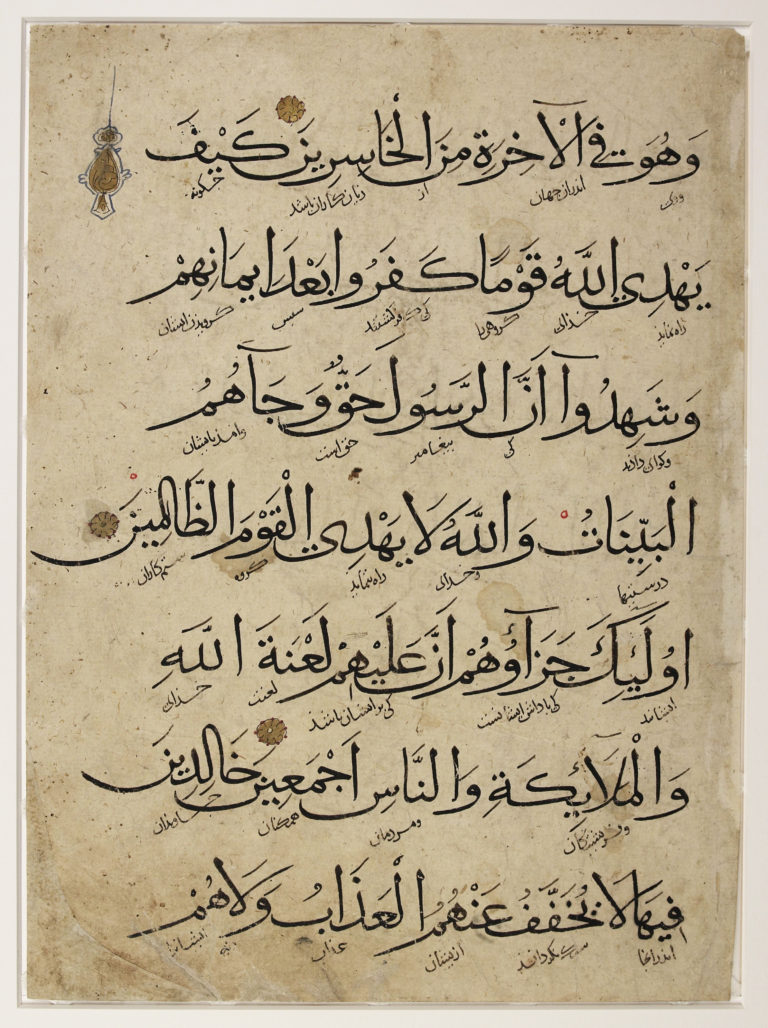Tawqi‘
(Pronounced “tao-kee”; Turkish–Tevki‘; Persian–Toqi‘)
Meaning
- “Tawqi‘ ” is derived from the Arabic verb, waqa’a, meaning “to sign,” because it was regularly used to write the signature on a ruler’s decrees
Uses
- Most often used for scrolls, diplomas, royal documents and calligraphic tours de force
- Used in ancient Persia for writing the final colophon of a book, showing the date and place of writing
Companion script
- Tawqi‘ is most often written in conjunction with riqa‘, which is a smaller version of the same script
Timeline
- Developed in the 10th century
- Refined by Şeyh Hamdullah in the 15th century
- Gradually replaced by divani in the 19th century
- Mostly obsolete today
Distinctive characteristics
- A smaller variant of thuluth, its letters are somewhat more compressed and rounded
- Letters that don’t connect on the left are often connected in this script (unauthorized ligatures), allowing it to be written with speed
- Features proportionally shorter ascending strokes and shorter, more deeply curved horizontal strokes
